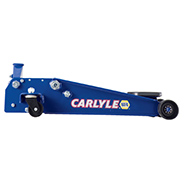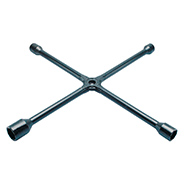With regular maintenance, you can extend the life of many parts of your vehicle, including its tires. In this post, we’ll discuss the importance of tire rotation, what tire rotation pattern(s) to use, and how to do it yourself.
How and Why to Rotate Your Tires

Tire rotation: What it is and why it’s important
Tire rotation is when you alternate the position of your car’s tires. This means moving each tire into a new spot, from front to back and/or side to side.
Depending on the vehicle and their position, tires may work very differently from one another. If always left in the same spot, certain tires will wear down faster than others. By rotating them, wear will be spread more evenly across all four, extending their life.
Most tires should be rotated every six months or every 10,000 to 13,000 km. Some tire manufacturers will require you to rotate at specific times to maintain your warranty. To save time, try combining tire rotations with oil changes.
Tire rotation patterns
You can align your tires in different patterns depending on your vehicle’s drivetrain, what tires you have, and your preference.
First, your tires. The type of tires you have will impact which pattern you can use. Non-directional tires can be rotated in any direction and can swap sides, meaning you can use any of these patterns. Directional tires, however, can only be rotated in one direction (front to back/back to front) and cannot switch sides. Directional tires will have a marking on the side that indicates their rotational direction.
Choose from three main tire rotation patterns, while taking into account your car’s drivetrain and your preference.
Forward cross
This is the most common tire pattern for front-wheel-drive vehicles. Move the front tires to the back, keeping them on their respective sides. Then, bring the back tires to the front and cross sides.

X-pattern
As an alternative to forward cross, front-wheel-drive vehicles can also use this pattern. Swap your front and back tires and switch the respective sides of both.

Rearward cross pattern
If your vehicle uses rear-wheel or four-wheel drive, use this pattern. This is the opposite of the forward cross. Bring your back wheels to the front, keeping them on their respective sides, and move the front wheels to the back, crossing their sides.

Tire rotation how-to
The main way to get your tires rotated is by a local automotive technician. Call ahead to find out pricing. Some tire manufacturers offer free rotations if you get them installed at their service centres.
Alternatively, you can learn how to rotate your tires yourself. First, you’ll need the following tools:
- Floor jack (check out our guide to picking the right jack)
Read these instructions in full before starting:
- Make sure your ignition is off.
- Using the floor jack and jack stands, lift your vehicle.
- Loosen each tire with the lug wrench. When the tires are off, inspect for wear and hidden punctures.
- Push tires into their new positions and screw on the lug nuts with your fingers. Don’t tighten them yet.
- Raise the car with the floor jack, remove the jack stands, and lower the car.
- Once the car is on the ground, use the lug wrench to tighten all the lug nuts in a star pattern.
Before attempting a tire rotation, check out this post for a detailed look at how to change tires. Don’t skip corners when DIYing, use the proper tools, and always put your safety first.
When done properly and regularly, tire rotation can save you money down the road by extending the life of your tires. If you have questions, your local NAPA dealer would be happy to help.








